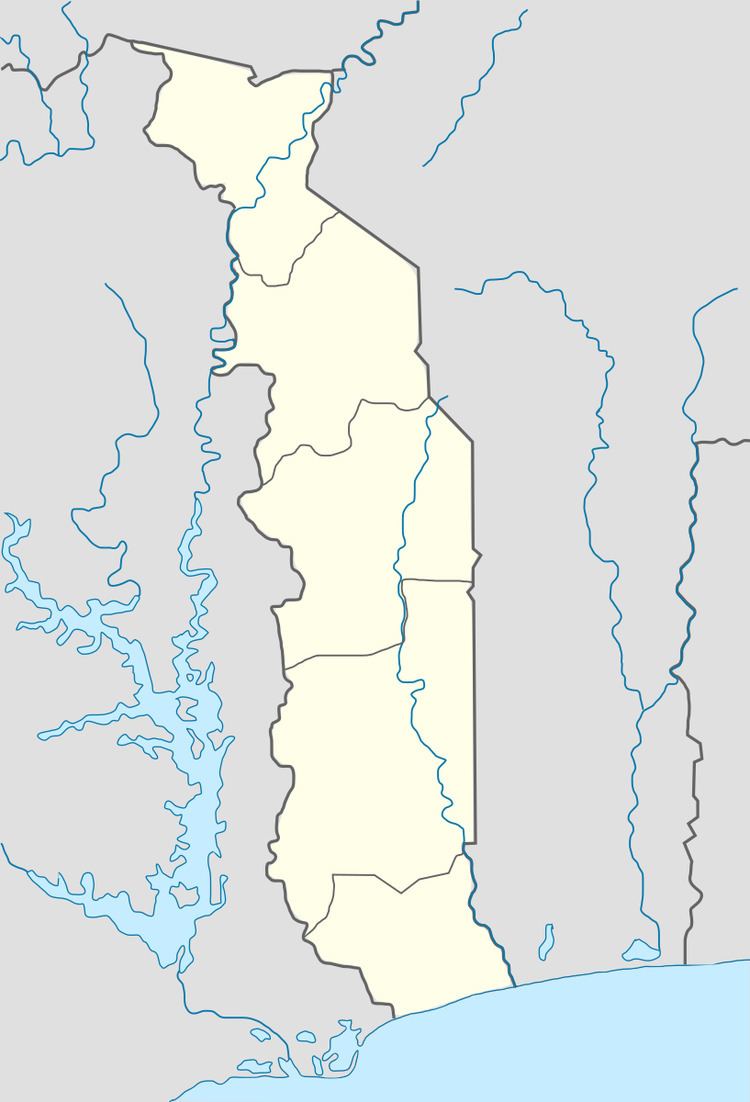Elevation 400 m (1,300 ft) Population 84,979 (2006) | Local time Tuesday 1:34 AM Number of airports 1 | |
 | ||
Weather 27°C, Wind SW at 10 km/h, 75% Humidity | ||
Fasterz crew togo atakpam city
Atakpamé is the fifth largest city in Togo by population (84,979 inhabitants in 2006), is a city in the Plateaux Region of Togo. It is an industrial centre and lies on the main north-south highway, 161 km north of the capital Lomé. It is also a regional commercial centre for produce and cloth.
Contents
- Fasterz crew togo atakpam city
- Map of Atakpame Togo
- Gakogue gongonneur atakpam togo golfe de guin e hd
- History
- Transport
- Governance
- Twin towns Sister cities
- References
Map of Atakpame, Togo
Gakogue gongonneur atakpam togo golfe de guin e hd
History
Atakpame is located on a hilly wooded savannah on the eastern end of the Atakora Mountain range, and together with Kpalimé represent the last major settlements of Yoruba origin dotted between the Niger and the Volta rivers. In the 1764 Battle of Atakpamé, the town played host to a clash between the rebellious Akyem vassal state with the help of Yoruba mercenaries of the Oyo Empire and the Dahomeans against the forces of the Ashanti Empire under their Asantehene, Kosi Oboadum. In 1763, the Ashante vassal state of Akyem made contact with the Dahomeans to the east while planning a rebellion with other dissident vassal states within the empire, such as the Kwahu and Brong. In the mean while, the Bantamahene, one of the Asante senior military officers had been relentlessly pressuring Asantehene Kusi Oboadum to crush the building rebellion in war. The Bantamahene Adu Gyamera even went as far as threatening Asantehene's impeachment from power. However The Asantehene ordered no invasions until news reached them that the Akyems had sought out aid from the Oyo Empire, the greatest power at the time. The result of the battle was a crushing defeat of the Ashanti forces and the death of their Juabenhene (head of one of the royal clans). The repercussion of this defeat by the Oyo Empire was the destoolment of Kusi Obodum, who was replaced by a much younger and charismatic Asantehene, Osei Kwadwo Okoawia.
In 1902, the town was the scene of a scandal in which German Catholic missionaries accused German colonial officials of mistreating girls. The scandal had reverberations in German politics. In 1914, during World War I, the British and French invaded the German colony of Togoland during the Togoland Campaign. It was aimed at capturing or destroying a powerful German radio station at Kamina near Atakpamé. The Allies feared that German maritime raiders would be able to maintain contact with Berlin via the station and thus rapidly pass on intelligence. A short campaign began on 6 August 1914, and the Germans were forced to destroy the station on 24 August before surrendering to the Allies on 26 August.
It was during this campaign that Alhaji Grunshi fired the first shot by anyone in British service during the war. Most native residents of the city are the Ana subgroup of the Yoruba people.
Transport
The town is served by a station of the main northern line of Togo Railways.
Governance
The town was the administrative centre of German Togoland.
Twin towns — Sister cities
Atakpamé is twinned with:
